At the confluence of the Ohio and Muskingum Rivers lies historic Marietta, Ohio. In the southeastern part of the state, it’s one of the few parts of the Midwest that intersects with Appalachia; making the city a confluence of cultures, too.
In the heart of Marietta’s riverfront downtown is JustAJar Design Press, a letterpress studio run by husband and wife team Sara and Bobby Rosenstock. Together, they create event posters, greeting cards, fine art prints, and more by pairing 150+-year-old wood and metal type with intricate hand-carved wood blocks made in-house. Every print run is signed and numbered, and when they’re gone, they’re gone—the couple makes artistic trays, furniture, and other useful items from the wood blocks they no longer print from.
BOBBY ROSENSTOCK, JUSTAJAR DESIGN PRESS“It’s not like a Photoshop filter that you click to make things look worn. … It’s worn because this piece of type was in a print shop somewhere in Ohio in the mid-1800s.”

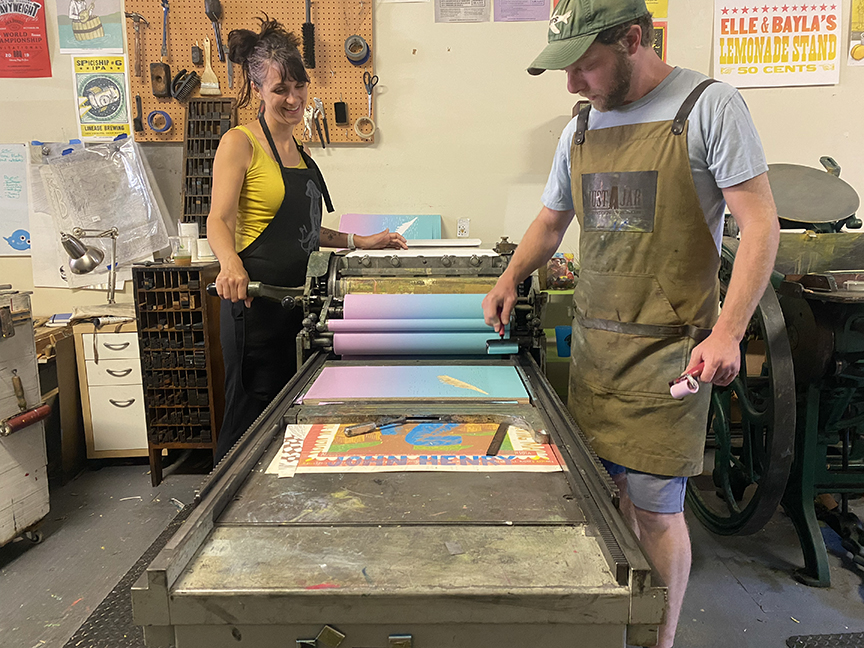
Bobby is a classically trained artist who first sketches out the designs in pencil, then follows the lines on tracing paper so he can reverse the design (necessary for printing) and apply the design to the birch plywood he uses for carving. If the print requires type, JustAJar has nearly 200 cases of wood and metal type ranging from small 8-point height to letters six inches tall. Each color has to have its own separate woodcut, so given the level of detail, most people would limit the color palette to two or three at most. Bobby is known for using at least four and sometimes going up to seven. Depending on the number of colors used and how much hand-carved detail is needed, a print run could take 40 hours or as many as 100 hours to finish.
In addition to co-running JustAJar, Sara is also a professor of graphic design at Marietta College and uses her technical skills to apply the designs to the digital sphere. With her expertise, JustAJar’s designs go beyond paper and can be seen on t-shirts, product packaging, websites, and more. Besides being married, the two are perfectly paired in the business—blending the artistic printing techniques of the past with the demands of an increasingly digital world.
JustAJar’s artistry has become such an iconic style, particularly in the world of show posters, that musicians from around the country regularly seek out their services. They’ve made concert posters for Emmylou Harris, Willie Nelson, Soundgarden, Shovels and Rope, and many more, as well as posters for music festivals. That includes the famous Nelsonville Music Festival, which takes place just an hour west of the shop.
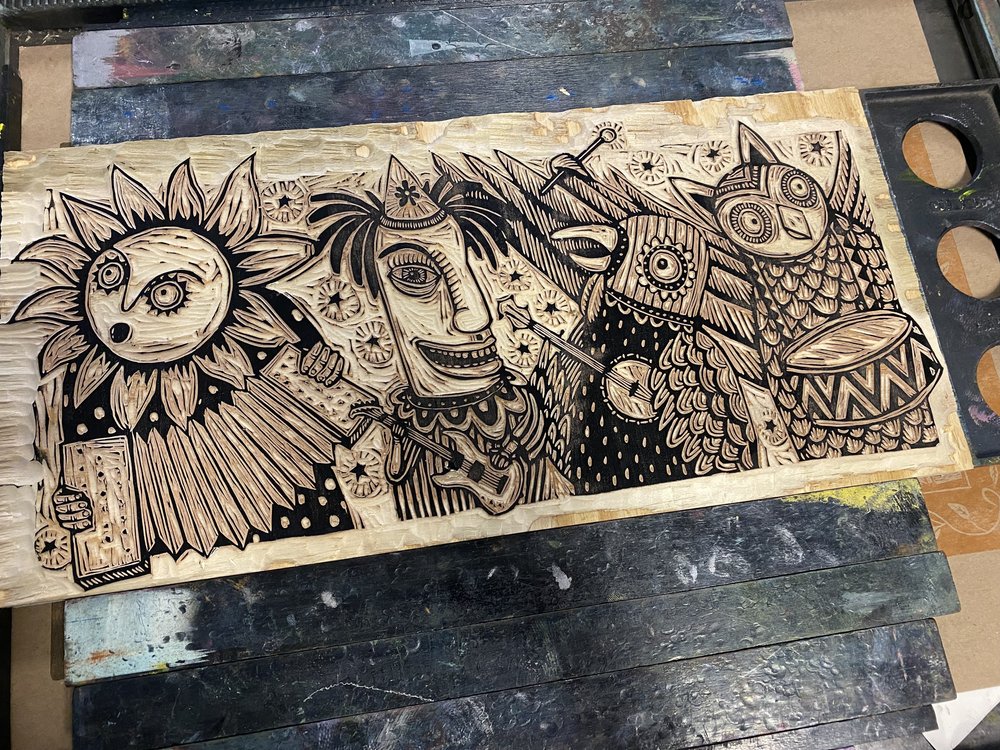
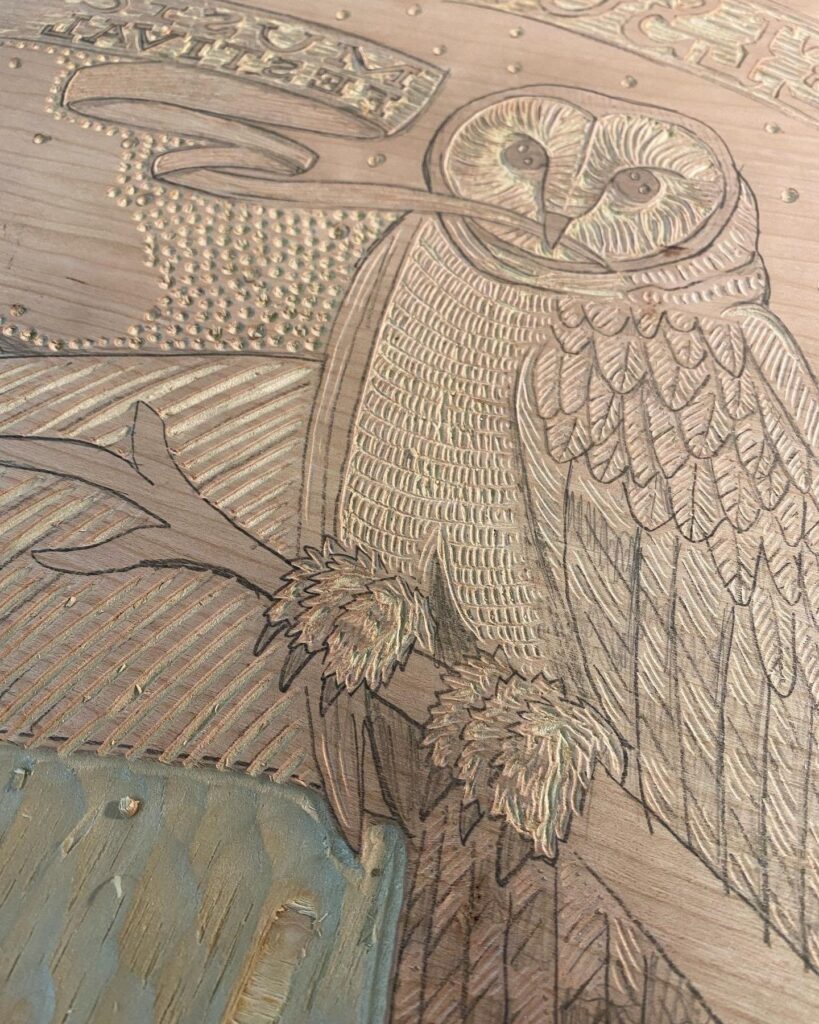
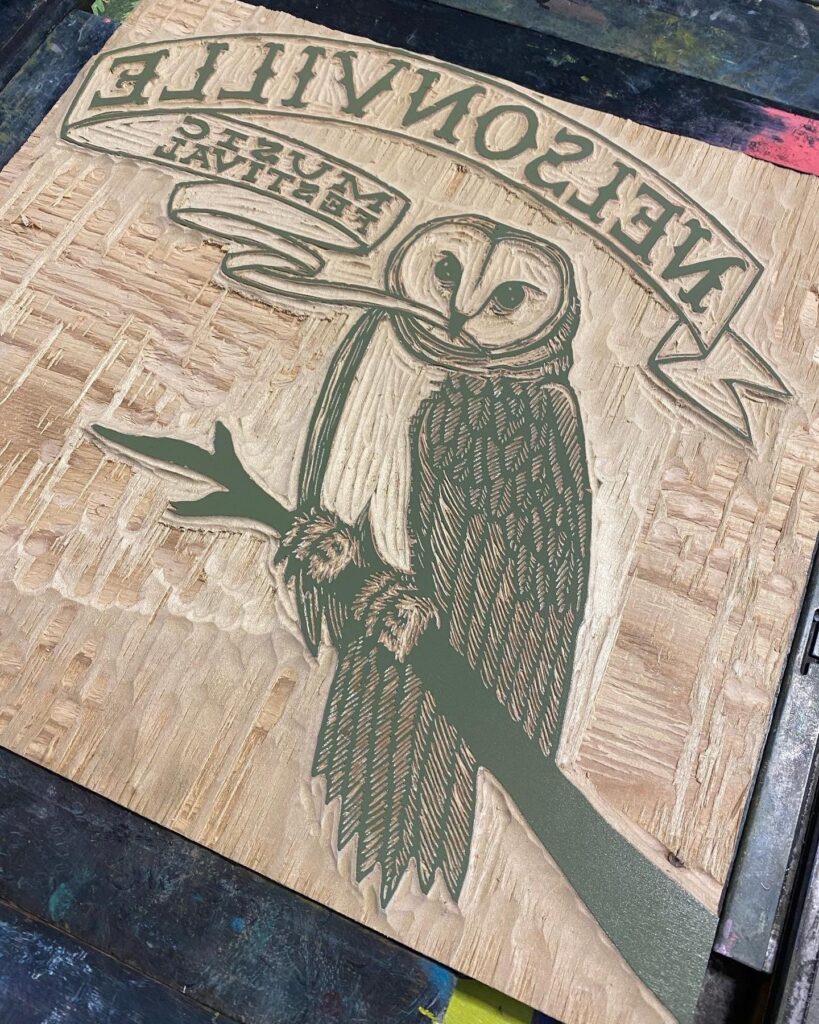
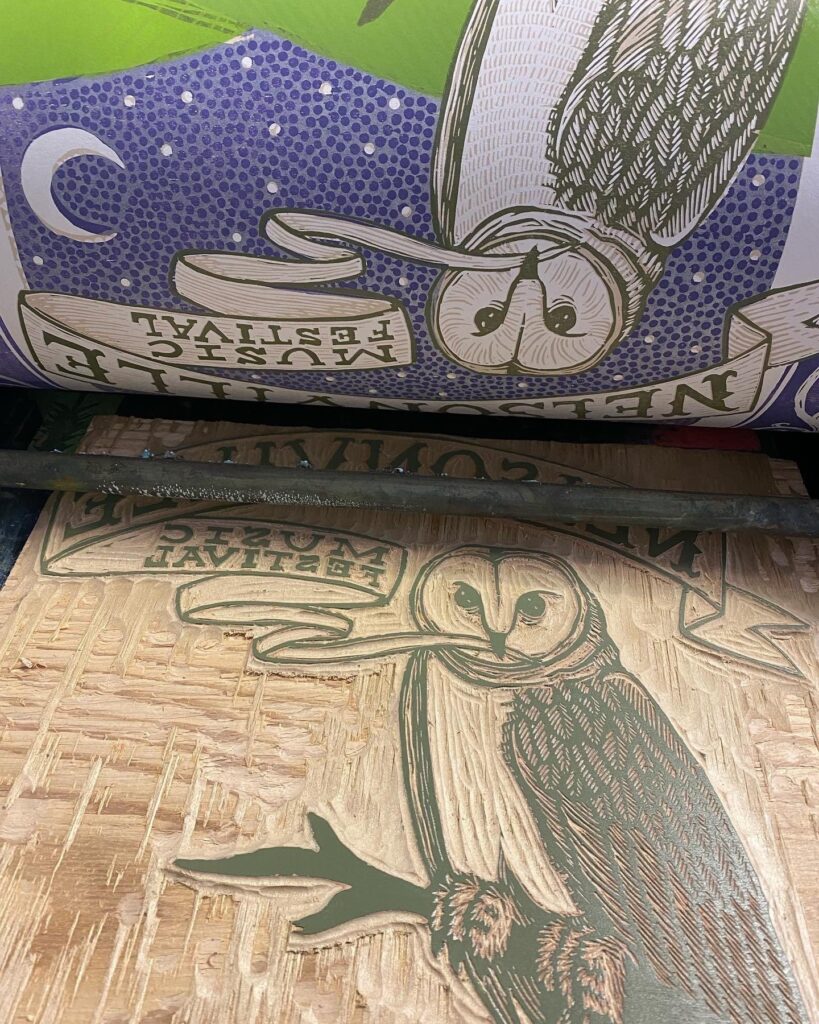
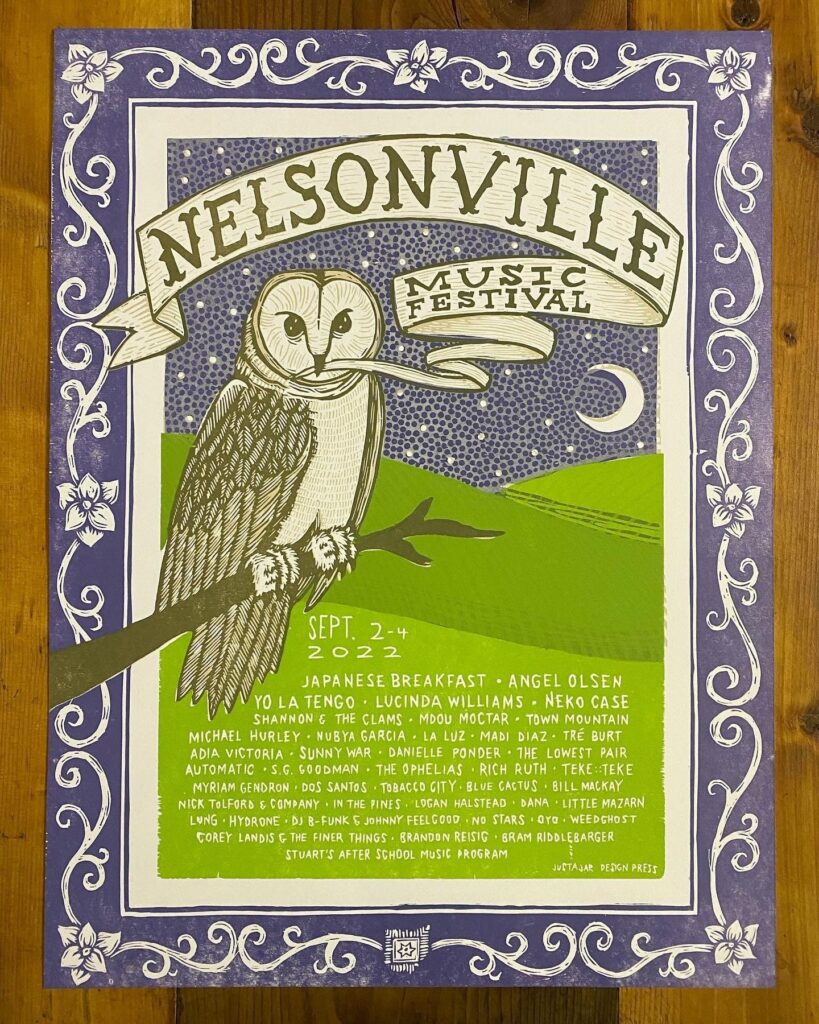
If you happen to stop by on a day they’re printing, you might just get to see their Vandercook SP20 Proof Press from the 1960s or their Chandler & Price foot pedal-operated press from the 1880s in action. (Even the paper cutter is from the 1890s.) While these machines—mostly solid cast iron and, in the case of the Vandercook, weighing nearly a ton—certainly make reproductions easier, they’re still largely manual. They’re direct descendants of the Gutenberg printing press invented around 1440 and still require feeding the paper into the machine by hand and hand cranking the gears to make the press function.
While working with such old machines has its challenges, it also lends JustAJar its iconic aesthetic that can’t simply be replicated by digital means. As Bobby told Woodcraft Supply, one of the oldest businesses in the U.S. selling woodworking tools, on their blog, “It’s not like a Photoshop filter that you click to make things look worn. … It’s worn because this piece of type was in a print shop somewhere in Ohio in the mid-1800s.”
Shops that blend fine art and commercial printing like JustAJar are few and far between. The equipment is rare since much of it hasn’t been manufactured for the better part of a century. The massive and heavy equipment requires space and the means to move it. Should the equipment break down, it’s not uncommon to have to hire a machinist if you can’t figure out the problem yourself and even have the needed parts that are no longer made specially fabricated.
And that’s to say nothing of the immense amount of patience and technical skills required to be able to make a high-quality print. If a piece of type is even a fraction of a centimeter too short, the ink won’t reach it and won’t transfer to the paper. If the design isn’t locked in tightly, the blocks could shift and throw off the entire print.
Nowadays, most printing shops screenprint or work almost entirely with digital tools, so letterpress shops like JustAJar keep this traditional art alive and inspire generations to come to do the same. As Bobby says on JustAJar’s website, “We don’t teach formal workshops, but if someone walks in the door and wants to learn to print, I invite them in, and we make a print together. It happens often.”
